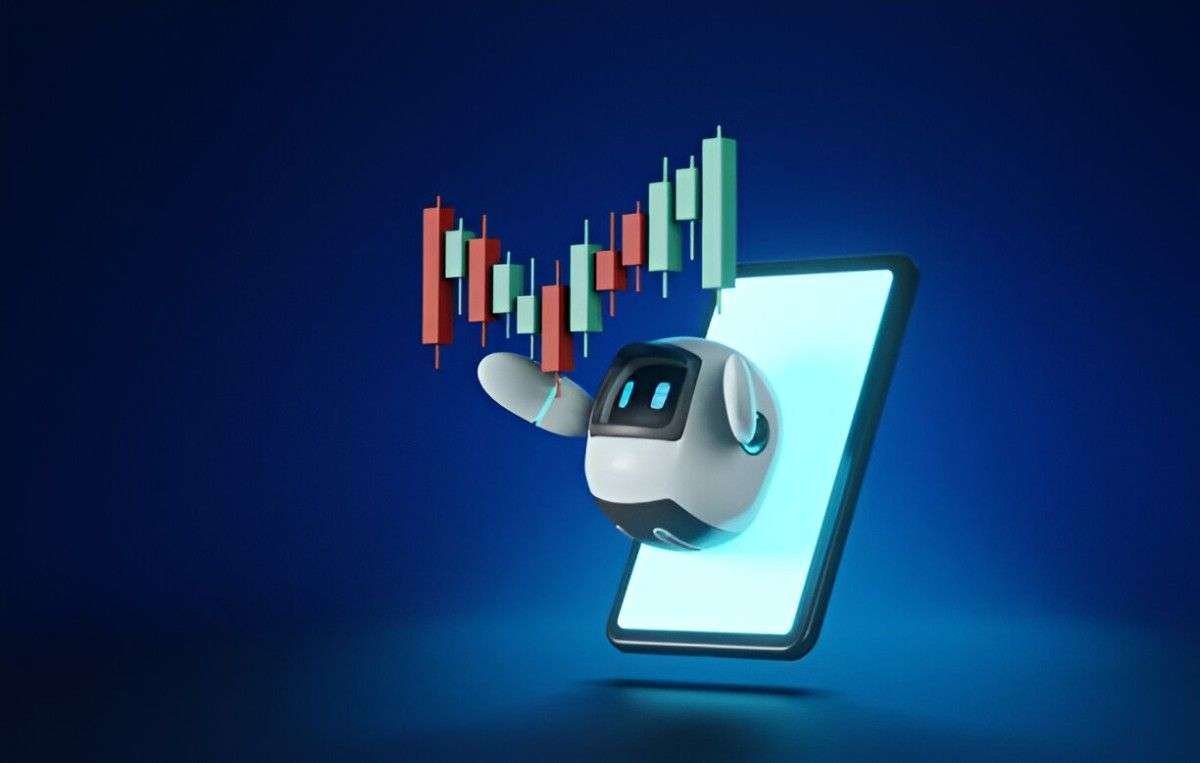The world of stock trading has changed dramatically in the past few years, with artificial intelligence (AI) playing a growing role in shaping how we make investment decisions. As an investor, I’ve spent considerable time exploring the ways AI-powered apps are reshaping the trading landscape. In this article, I will walk you through what AI stock trading apps are, how they work, and how they can help you improve your investment strategy. Along the way, I’ll also compare some of the leading AI stock trading apps and provide real-life examples to highlight their benefits.
Table of Contents
What Are AI Stock Trading Apps?
AI stock trading apps use advanced algorithms and machine learning models to analyze vast amounts of market data and make predictions about stock price movements. These apps leverage historical data, real-time market trends, and even news sentiment to offer insights or execute trades on behalf of the user. For many, this is a way to remove the emotional aspects of trading and rely on data-driven decisions instead.
How AI Improves Stock Trading
AI applications in stock trading have several key advantages. As someone who has used these tools for some time, I can confidently say that their most significant benefits include:
- Speed and Efficiency: AI can process massive amounts of data far quicker than any human could, allowing it to identify trends and patterns instantly.
- Data-Driven Decisions: Unlike human traders, AI doesn’t get swayed by emotions or biases. It’s purely driven by the data at hand, allowing for objective decision-making.
- Predictive Analytics: AI uses historical data to make predictions about future stock prices. While predictions are never foolproof, AI models tend to be more accurate than traditional analysis.
- Automated Trading: Many AI stock trading apps offer features like automated trading, where the app executes trades based on predefined criteria, allowing investors to capitalize on opportunities 24/7.
I’ve personally found that AI apps help streamline the decision-making process, offering me insights that I might have missed with manual analysis.
Popular AI Stock Trading Apps
Here’s a look at some of the most popular AI-powered stock trading apps available today.
| App Name | Key Features | Best For | Cost |
|---|---|---|---|
| Trade Ideas | Real-time scanning, backtesting, paper trading, automated trading | Experienced traders | $228/month (Standard) |
| eToro | Copy trading, portfolio management, social investing | Beginners | Free (with spreads on trades) |
| Alpaca | Commission-free trading, API for algorithmic trading | Developers, algo traders | Free (commission-free) |
| Robinhood | Free stock trading, fractional shares, cash management | Casual investors | Free (with premium options) |
| Wealthfront | Automated portfolio management, tax-loss harvesting | Long-term investors | 0.25% management fee |
Each of these apps uses AI in different ways. For example, Trade Ideas offers sophisticated real-time scanning and backtesting tools for experienced traders, while eToro leverages AI for social investing, allowing you to mirror successful trades from other investors.
AI-Powered Trading: How It Works
AI stock trading apps typically rely on a few core technologies to operate efficiently:
- Machine Learning: This is the backbone of most AI stock trading apps. Machine learning algorithms can learn from past data and improve their predictions over time. For example, the more data the app processes, the better it gets at predicting stock price movements.
- Natural Language Processing (NLP): NLP allows AI apps to analyze text data, such as news articles or earnings reports. By understanding the sentiment behind these texts, AI apps can assess how they might influence stock prices.
- Big Data Analytics: AI trading apps analyze massive datasets to identify trends and patterns. These datasets can include stock prices, company earnings reports, social media sentiment, and economic indicators.
When using these apps, you’ll typically interact with an interface that allows you to set up your trading criteria. The app then analyzes data and executes trades based on your parameters. This process can happen in seconds.
Example: Predicting Stock Price Movements with AI
Let’s take a closer look at how an AI stock trading app might predict a stock’s price movement.
Imagine I’m using an AI-powered app that analyzes historical stock price data and news sentiment for a company, say, Company A. The app identifies a pattern that, in the past, whenever the company announces strong earnings, its stock price rises by 5% on average within two weeks. Based on this information, the AI might suggest that I buy shares of Company A ahead of the earnings announcement.
Additionally, the app could pull in social media sentiment and market news to refine its recommendation. If sentiment is positive, the prediction might be even stronger. If it’s negative, the AI might adjust its recommendation or warn me about potential risks.
Pros and Cons of Using AI Stock Trading Apps
Like any tool, AI-powered stock trading apps come with their own set of pros and cons. I’ve had personal experience with both the advantages and limitations of these apps, and I think it’s important to weigh both sides.
Pros:
- Automation: As I mentioned earlier, these apps can execute trades automatically based on predefined criteria, saving me time and effort.
- Better Predictions: AI can often make more accurate predictions than human traders by analyzing large datasets quickly and accurately.
- Data-Driven Decisions: These apps remove emotions from trading, which can help to reduce human error or impulsive decisions.
Cons:
- Complexity: Some AI stock trading apps are complex and require a bit of a learning curve to understand. I found it a bit challenging to get started with certain tools that were designed for more experienced traders.
- Dependence on Data: AI models are only as good as the data they use. If the app’s algorithms are based on inaccurate or outdated information, the predictions can be flawed.
- Cost: Some of the more advanced AI trading platforms can be expensive. For example, Trade Ideas costs $228 a month, which is a significant commitment.
Despite these drawbacks, I believe that for most traders, the pros far outweigh the cons. However, it’s important to start with a clear understanding of how these tools work and what to expect from them.
How to Choose the Right AI Stock Trading App
When choosing an AI-powered stock trading app, there are several factors to consider. In my experience, the best app for you will depend on your level of experience, trading goals, and budget. Here’s a simple comparison chart to help you make a more informed decision.
| Criteria | Beginner | Intermediate | Advanced |
|---|---|---|---|
| Ease of Use | Simple interface, minimal setup | Some customization options | Complex, advanced features |
| Cost | Low or free | Mid-range fees | High fees |
| Features | Basic automated trading, social investing | Customizable alerts, automated trading | Real-time scanning, advanced backtesting |
| Best For | Casual investors, copy trading | Long-term investors, semi-professionals | Professional traders, algorithmic traders |
If you’re just starting, I recommend an app like eToro or Robinhood, which offers low barriers to entry and simple tools. If you’re an experienced trader, you might consider Trade Ideas or Alpaca, which provide more customization and advanced features.
Real-Life Example: Using AI to Make a Stock Trade
Let’s consider a practical example where I use an AI-powered stock trading app to make a trade. Suppose I’ve set up a portfolio that includes shares of Company A. The AI app suggests that I buy additional shares before an earnings report, predicting a 5% increase based on historical data. I decide to follow the recommendation and buy 100 shares at $50 each.
After the earnings report is released, the stock price jumps by 5%, just as the app predicted. I sell the 100 shares for $52 each, making a profit of $200.
Here’s how the math breaks down:
- Initial Purchase: 100 shares x $50 = $5000
- Sale Price: 100 shares x $52 = $5200
- Profit: $5200 – $5000 = $200
In this case, the AI app helped me make an informed decision that led to a profit of $200. This is a small example, but with larger investments, the returns can be significant.
Conclusion
AI-powered stock trading apps are revolutionizing the way we approach investing. They offer a level of data analysis and speed that is beyond human capability, making them invaluable tools for anyone serious about stock trading. While these apps come with their own set of challenges, such as cost and complexity, the benefits they offer in terms of automation, data-driven decision-making, and improved predictions are well worth considering.
Whether you’re a beginner looking for a simple, automated tool or an advanced trader seeking sophisticated features, there’s an AI stock trading app out there that fits your needs. By understanding how these tools work and using them strategically, you can improve your trading results and make more informed decisions in the ever-changing stock market.





